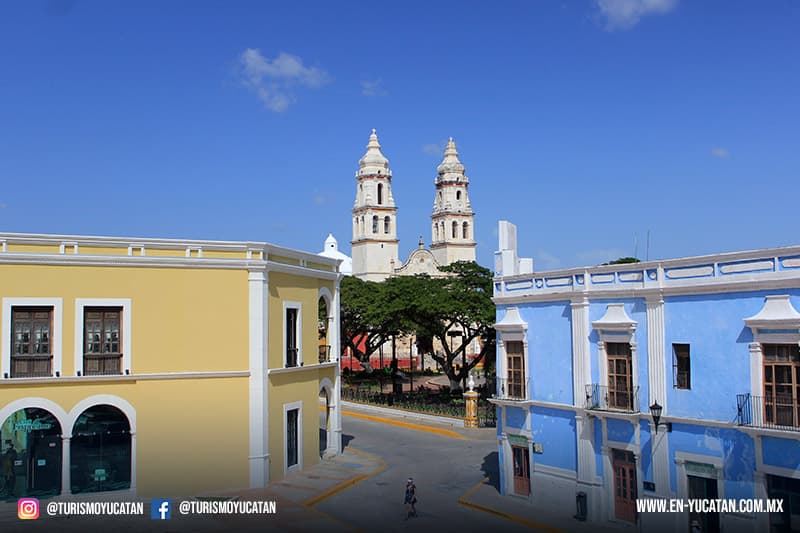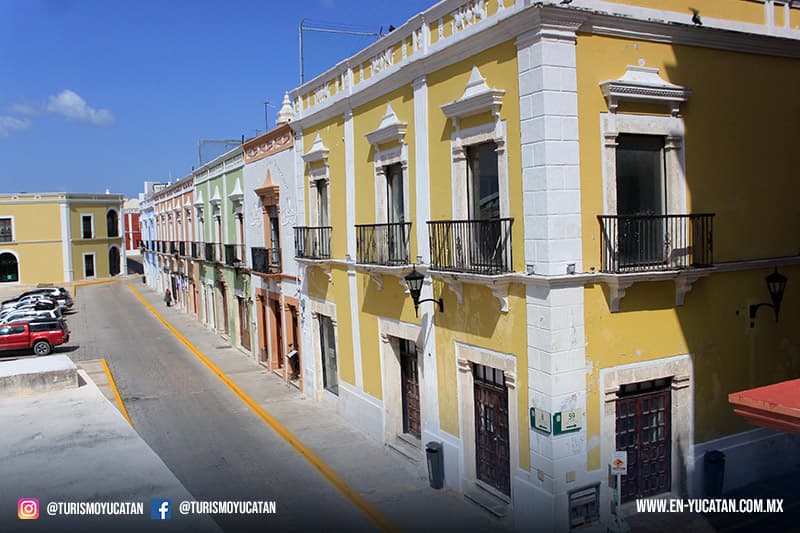Campeche is a city that breathes history in every corner. Its streets and alleys evoke the presence of Spanish conquistadors, the pirates who tried to plunder it, and the civil struggles of the 19th century that shaped its character.

Today, the historic center of Campeche is the heart of the state’s commercial, cultural, administrative, and tourism activities, a vibrant mix of structures from the 16th to 19th centuries that coexist with modern offices and homes from the 20th century built on reclaimed land from the sea.
Campeche, a UNESCO World Heritage Site

On December 1, 1999, the fortified city of Campeche was declared a World Heritage Site by UNESCO in Marrakech, Morocco. This recognition highlights the stunning colonial architecture of its facades, the result of an extensive restoration and preservation effort that maintains the historic charm of the city. The designation was also made possible by the joint efforts of the Government of the State of Campeche, the municipality, which implemented crucial regulations to protect the historic center, and civil society.
Later, on June 27, 2002, another regional gem, the archaeological site of Calakmul, was added to the World Heritage List, further recognizing Campeche not only for its colonial architecture but also for its pre-Hispanic heritage.
A Tour Through Campeche’s Historic Buildings

The historic center of Campeche boasts an impressive array of buildings that reveal the city’s storied past. Among the military monuments are the bastions and forts that protected the walled city from pirate attacks, such as the Baluarte de San Carlos, which now serves as a museum, and the Fort of San Miguel, the largest in the city, offering spectacular views of the Gulf of Mexico.
In terms of civil architecture, the Municipal Palace, with its characteristic yellow color and wide arcade, is one of the most significant buildings. Also noteworthy is the Casa del Teniente del Rey, dating back to the 18th century, featuring beautiful colonial details that reflect the prosperity of the era.
Religious architecture also holds a special place in downtown Campeche. The Cathedral of Our Lady of the Immaculate Conception, with its towering spires and stone facade, is a symbol of the city. Other notable churches include the Church of San Roque, which was once part of the city’s defenses, and the small yet charming Chapel of San Francisquito, which maintains a sober and serene colonial style.
A Living Historic Center

Today, Campeche’s historic center is not only an open-air museum but also a lively space filled with restaurants, cafés, and art galleries, especially along the iconic Calle 59, which connects the Puerta de Mar to the Puerta de Tierra, offering visitors a unique experience.
Campeche is, without a doubt, a living testament to Mexico’s rich historical and cultural heritage, where every building and street tells stories from centuries past, making it a unique destination for those seeking a blend of tradition, history, and modernity.